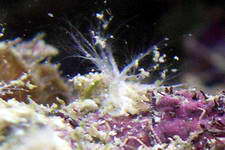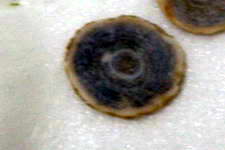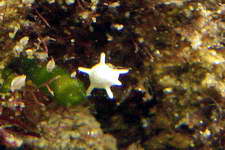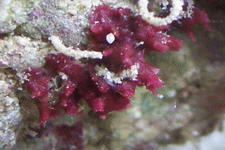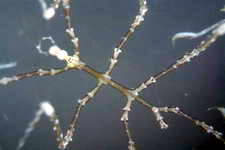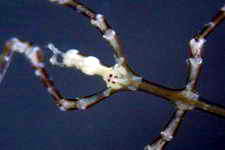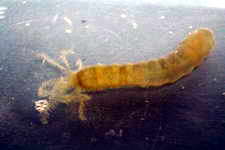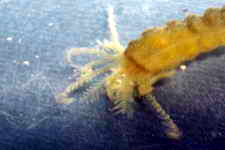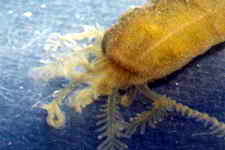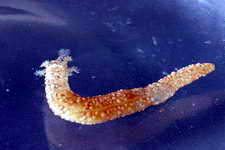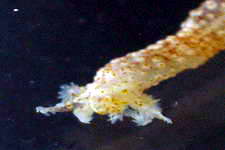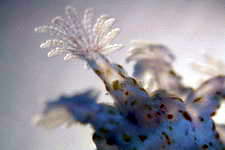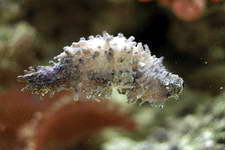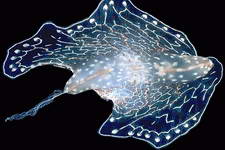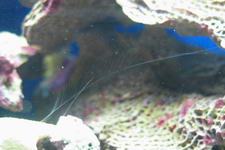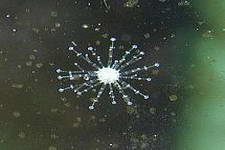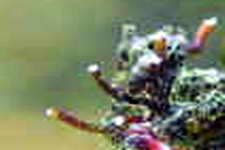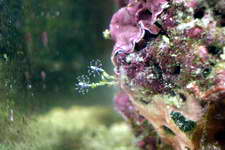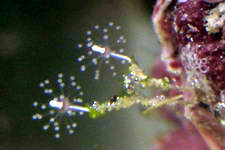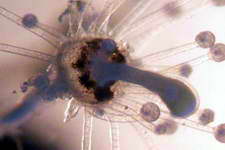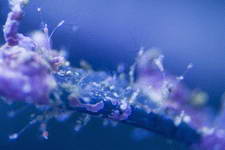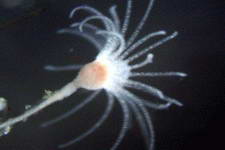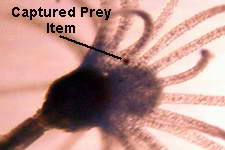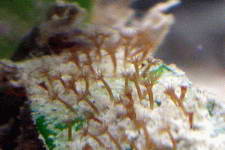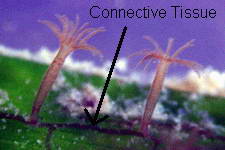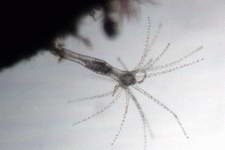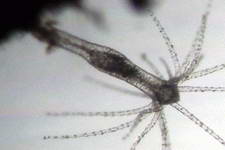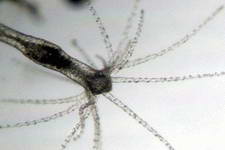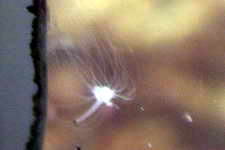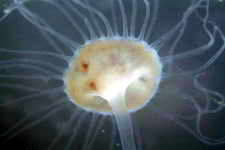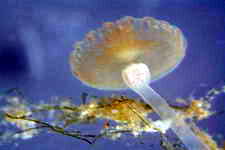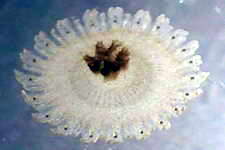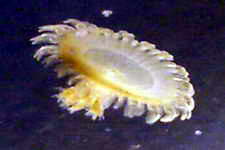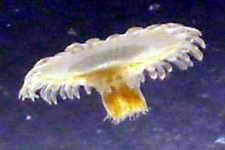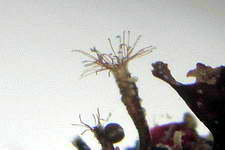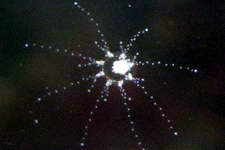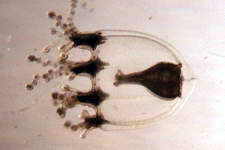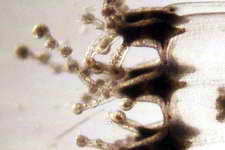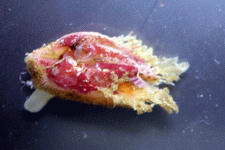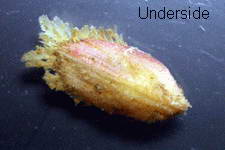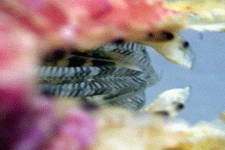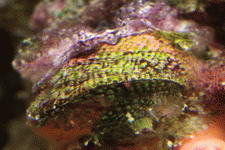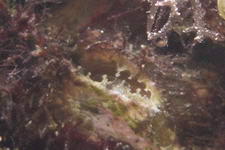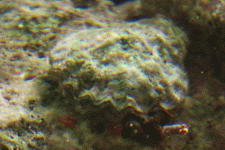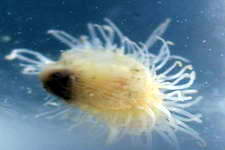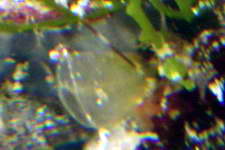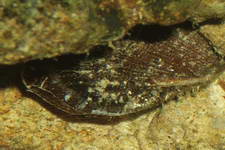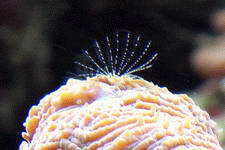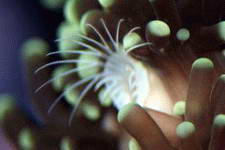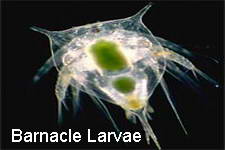Cephalochordata - Known
as lancelets or as amphioxus (from the Greek for "both [ends] pointed.
Harmless sand bed dwelling animals that feed by taking in
water through the mouth, which is drawn in by the beating of
cilia
located on the wheel organ, a set of ridges lying inside the mouth. The
water is first filtered by the oral cirri, slender projections that
surround the opening of the mouth.
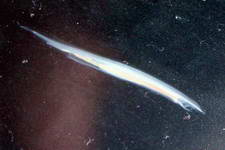

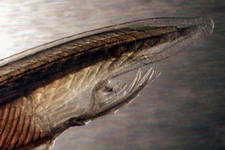 Foraminiferans
Foraminiferans
-
The branching white type are usualy mistaken for a sponge, if you look
closely you can see what
looks like thin hairs at the ends of the stalks, these are the
Rhizpodia which collect food particles, they also can be
red and are usualy only a single stubby branch no more than 1/4 inch
tall, which at first led me to believe they were a type of branching
coraline algae. As you can see, this animal classification
has
many members which do not resemble each other much. Click on the link
for a detailed article on this family group.
HYDROIDS
- They can be found in many sizes and forms,
some as individuals,
some as colonial groups. They do not make welcome tank guests due to
their strong stinging abilities and rapid population growths. While
some of the larger types can be combatted through physical removal, its
all but impossible to remove the very small species, thankfully though
most will die off as their food sources are consumed, can be nerve
wracking to wait for that to happen though.
©
2016 ALL RIGHTS RESERVED
All content and photographs
are CopyRight Protected
and may not be used
,copied or reproduced elsewhere
without permission of
the authors.
GO
BACK
Please take a
moment and consider supporting any one of the projects listed within.
Thank you.
Visitor Count since 24 Jan.08





